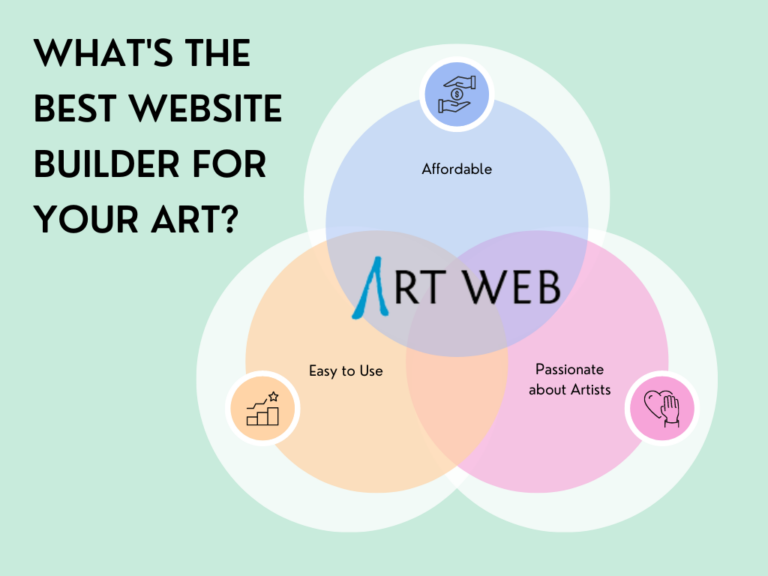No artist can afford to be offline. A website is as vital to an artist as a paintbrush is to a painter. But what sort of website should you have and which is the best website builder?
Chances are you don’t really need or want to know how they work. The whole point of using a web-building platform for your art website is that the letters HTML never have to cross your keyboard.
Generally, using a CMS (content management system) or web builder—free or paid—means you can avoid paying a web developer to do it. Instead you can pick a designs and then simply drag and drop or click to create boxes to fill with text and pictures.
While web builders will share most features, it may be that the free templates can only offer so much. If you are an artist, you are likely to be choosing from generic templates that have been created for anything from restaurants and clothing stores to dog grooming and nail technicians.
Of course, some like Artwrb have been designed specifically for artists. Specialist web builder sites know what their sector need and will make it easier to use.
So here’s your quick guide to the main web builder sites compared to Artweb. Many have the same features and can set up your site in a few hours, we think Artweb offers a few extra features that have been designed specially for artists, but we are biased!
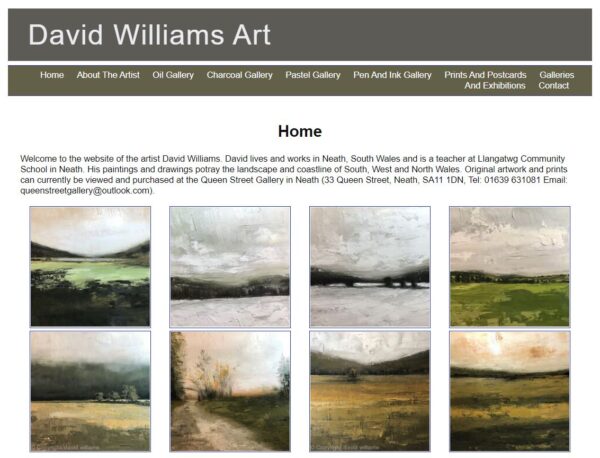
What do you need for a website?
Before you get going, you need an idea of what you want your site to do. A professional looking website will share plenty of features and professional designers will talk about some of the must-have ingredients for your site.
Luckily Artweb has put together a series on the pages you need for your site starting with 10 Secrets of the Best Website but here’s a few things to consider as you choose your site builder.
Design options: We mentioned above that free templates can be quite limited when it comes to generic site builders. Your site will often look like other businesses as a template can be used by thousands of websites.
Images: for a visual artist, the imagery is the most important element for your site. A website should work as your digital portfolio, so look at the templates on offer for gallery pages and displaying images. Your site might use a lot of images, so you need to have sufficient storage. It’s unforgiveable to have poor quality images. Better to stick to a few products with good images than cram your site with dozens or poorly taken pictures. And the same goes for the layout. Keep it simple and rotate your images on a regular basis. Find out more about web layout on our feature Creating a Great Web Gallery
Text: What you say about you and your artwork will help drive sales. Potential buyers or followers want to know what inspires you and how your work practice has developed. Other text on your site should be limited. Include a CV of exhibitions, education and prizes. Explore more about creating your About Me page How to Create an About Me Page that Lets your Website Sing You might also want to create an Artist Statement.
White space: This is the bit of the screen that has no words or pictures. But it is far from a blank space, it’s part of your work: Image an exhibition with no wall space.
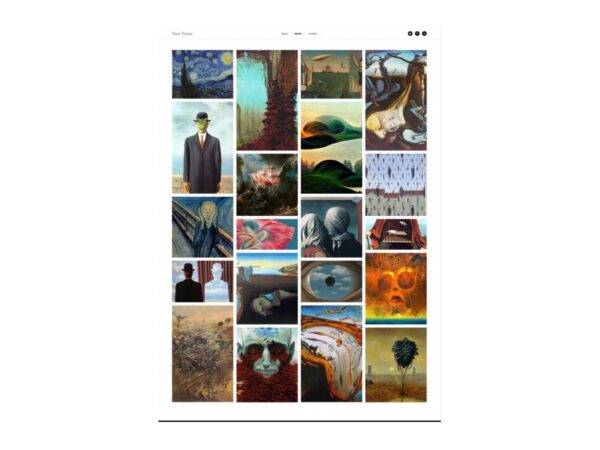
What’s the difference between a CMS and web builder?
The main difference is that a web builder is usually an all-in-one site that will include hosting (making it accessible online) and offer a domain (web address) as well as all the templates to create pages.
A content management system will provide the building bit—the creating, storing and publishing of the website—but the hosting and domain is up to you to purchase separately. A CMS is usually more sophisticated and requires more web knowledge.
The code is still there somewhere, but someone has already done it for you, so all you see is a menu to insert text boxes, images and other web content.
Examples of CMS and web builder platforms include WordPress, Joomla, Drupal, Magento, Squarespace and Wix. All have a slightly different way of working, with some more technically minded and requiring a web address (domain) and a hosting service (this is the bit that gets you onto the web).
Learn more about the differences between a CMS and a web builder from the geeksperts at digital.com.
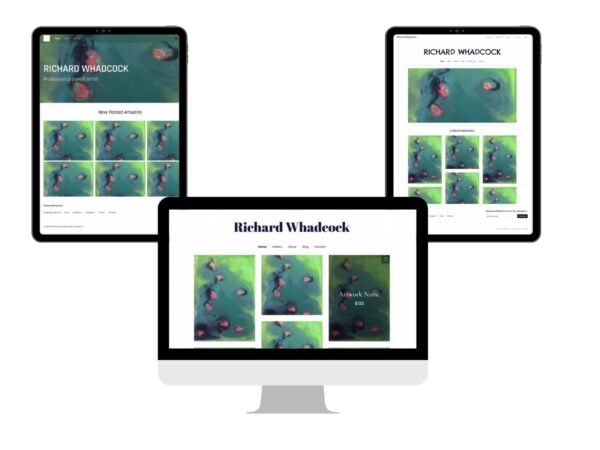
How difficult is it to build an art website?
Back in the land of the non-expert artist who just wants a good-looking website and quickly, web builder sites are the way to go. Whichever one you choose, most will start with a dashboard created with simplicity in mind that makes it easy to start building.
Like many software programs, there are a lot of menu items you don’t need or might want to use later down the line when you want to do something sophisticated, like add a shop or buy a plug-in (more on that later).
How much does an art website cost?
Many website builders, including yours truly at Artweb.com, offer a free basic website design to get you started on your internet adventure. As you become adept at creating your site, you will want to graduate to a more professional site with lots of added extras, like a dedicated email addresses, better design templates and proper domain names. These elements are all designed to help your site look more professional.
What are plug-ins?
Plug-ins are the bells and whistles of websites and generally become available with paid subscriptions or individual fees. These include add-ons to sell your work, allowing payment options or link the website to your social media accounts. There are thousands to choose from, but the chances are you will only use a few.
The CMS/website builder you choose will generally sit on the web, leaving you to use clever SEO tricks to gain views. But hosted sites like Artweb have the added extra of being part of a community. Your website sits within an online gallery offering free marketing and promotion due to the sheer numbers it attracts.
So how does Artweb compare to the biggest web builders for artists?
WordPress
WordPress sites make up 43% of the web, so it’s pretty safe to say it’s designed for pretty much everything and everyone.
- Free version: Yes
- Free themes and templates: Yes
- Ease of use: Easy
- Shopping options: Yes
- Domain included: Yes
- Social media links: Yes
- Special artist designed site: No
Squarespace
Squarespace is a ready-to-use general web builder for everyone.
- Free version: No, there is a subscription fee
- Free themes and templates: Yes
- Ease of use: Easy
- Shopping options: Yes
- Domain included: Yes, this is a hosted website builder, so it’s all together in one place
- Added extras: A drag-and-drop builder
- Social media links: Yes
- Special artist designed site: No
Wix
Wix is an all-round all-in-one web-builder suitable for beginners.
- Free version: Yes, but with a Wix subdomain
- Free themes and templates: Yes
- Ease of use: Easy
- Shopping options: Yes
- Domain included: Yes, but it will be a Wix-branded website unless you’re willing to pay to remove the branding
- Social media links: Yes
- Added extras: A step-by-step web-building wizard
- Special artist designed site: No
Shopify
As the name suggests, Shopify is aimed at online stores. It can be used by small boutiques and big brands alike.
- Free version: No, there’s a monthly fee for all the functions, including website builder and e-commerce
- Free themes and templates: Yes
- Ease of use: Easy
- Shopping options: Yes
- Domain included: Yes
- Added extras: An App store
- Special artist designed site: No
Magento
Magento is designed for setting up online stores. There is a community (free) version and a subscription service (paid) through Adobe.
- Free version: Yes, a community version or you can go premium through Adobe
- Free themes and templates: Yes
- Ease of use: Medium – will require some knowledge of web development
- Shopping options: Its sole purpose is as an online store
- Domain included: No
- Special artist designed site: No
Joomla
Joomla is a content management system designed for more complex websites.
- Free version: Yes
- Free themes and templates: Yes
- Ease of use: Hard
- Shopping options: Yes
- Domain included: No
- Special artist designed site: No
Should I use Drupal for my art website?
Drupal is for the tech-savvy, money-conscious CMS builders.
- Free version: Yes
- Free themes and templates: Yes
- Ease of use: Advanced users
- Shopping options: Yes
- Domain included: No, you will need to purchase hosting and domain separately
- Added extras: Templates come designed for different industries
Ghost
Ghost is designed for newsletters, publishing, membership and subscription services and bloggers.
- Free version: Yes
- Free themes and templates: Yes
- Ease of use: Easy, but this is designed for writing, rather than shopping or galleries
- Shopping options: No
- Sharing on social channels: Yes
- Domain included: No
- Added extras: Email newsletters, memberships and SEO
- Special artist designed site: No
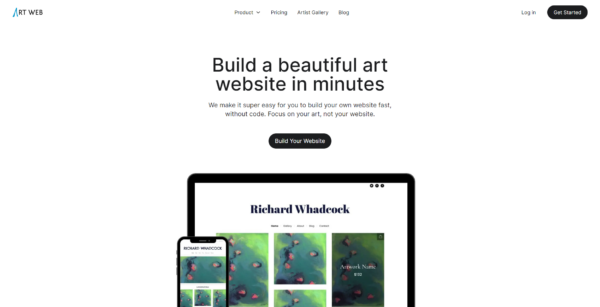
Artweb
Artweb is an all-in-one web builder designed for artists and makers to create visually stunning websites.
- Free version: Yes
- Templates: Yes
- Ease of use: Easy
- Shopping options: Yes
- Sharing on social channels: Yes. Artweb boasts around 170,000 Instagram followers
- Domain included: Yes
- Special artist designed site: Yes
- Added extras: Hosted by an art-specific umbrella website
- Marketing and promotion through its site and ‘featured artist’ program
- Home to thousands of artists
What to look for in a CMS or web builder for artists
- Ease of use, both in setting it up and then managing it
- Is there a free version
- What do you get with paid subscriptions
- Good content editing that’s simple but has plenty of options (drag-and-drop builders are ideal)
- Access to third-party themes, plug-ins, and integrations for improving your site
- Easy-to-read dashboard for developing all aspects of your site
- Marketing and social media features for things like email marketing, social media, and coupons
- Shopping options to potentially sell products
- Flexibility to grow

